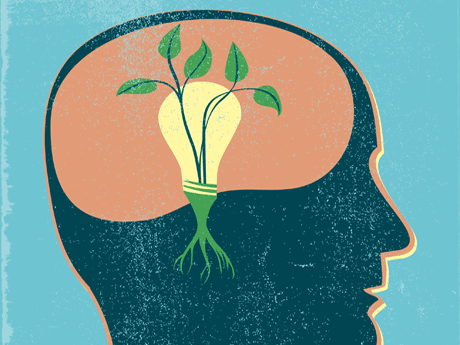
If you’re looking to improve your presentation skills, you’ve come to the right place. I know that developing effective presentation skills can significantly enhance your ability to communicate and engage with your audience. You may be wondering why this is so important. After all, aren’t there many opportunities for us to practice presenting?
The answer is yes — but only if we’re willing to do a lot of it! Presenting is such an important skill that most schools require students to give presentations at least once throughout their academic careers. But even if you don’t have to give a speech in school or work every day, there are plenty of opportunities to practice presenting in your own life: giving speeches at weddings and funerals; giving job interviews; giving speeches at conferences; and presenting in front of groups of friends or family members during holiday gatherings or parties.
Here are five tips to help you improve your presentation skills:
Prepare and Practice
Preparing for a presentation is a lot like preparing for an exam: if you don’t do the work, you’re not going to get good result. When giving a presentation, it’s important to start by defining your objective and structuring your content in a logical manner. You’ll want to make sure that you have enough time to prepare and practice before you go into the real thing, so that you can stay calm and collected when it comes time to deliver your message.
The way you present yourself is also very important. Make sure that you have slides or visual aids ready to support your key points, and practice your delivery multiple times, paying attention to your tone, body language, and timing. The more time you spend practicing ahead of time — and the more comfortable you are with what you have prepared — the more confident you’ll be when it comes time for showtime!
Know Your Audience
Presentation skills are something you can’t take for granted. You need to think about who you’re giving your presentation to, and how their needs and interests will affect your presentation. For example, if you’re presenting to a group of people who are all experts in the topic at hand, then it’s important not to dumb down the content or language so that they can understand it. But if you’re giving a presentation to a group of people who are new to the topic, it’s important that you don’t go over their heads by using jargon or complicated language.
By researching your audience ahead of time and understanding what they need from you, you’ll be able to tailor your presentation accordingly — and make sure everyone is able in some way!
Engage with Visuals and Stories

When you’re presenting, it’s important to remember that your audience is not a blank slate. They already have opinions and experiences that will shape how they interpret what you say. You can help them understand your message by using visual aids and storytelling.
Visuals can significantly enhance your presentation’s impact and help your audience retain information. Incorporate relevant images, graphs, or videos to complement your verbal message. Additionally, use compelling stories or real-life examples to illustrate your points and make them more relatable. Visuals and storytelling create a more immersive and memorable experience for your audience.
Maintain Eye Contact and Body Language
Nonverbal communication plays a crucial role in effective presentations. Maintain eye contact with your audience to establish a connection and build trust. Vary your body language by using gestures, movement, and facial expressions to convey enthusiasm and confidence. Stand tall and maintain a relaxed posture to exude professionalism and command attention. Your body language should complement and reinforce your spoken words.
Eye contact is one of the most powerful ways to connect with an audience. When you’re speaking, look at each person in the audience as you speak so that they can see that you’re talking directly to them. You don’t want your gaze to be too intense — if you stare at someone too long, they may feel uncomfortable or intimidated — but if you don’t look at anyone for too long, it will seem like you’re not focused on what you’re saying or that you don’t care about what’s being said.
Interact and Involve Your Audience
When you’re giving a presentation, it’s natural to want to keep your audience engaged. You want them to remember what you’re saying and be engaged in the material so they can apply it to their own lives. But how do you do that?
The best way is by encouraging audience participation. Interact and involve your audience to create an interactive and engaging presentation. Incorporate activities such as polls, quizzes, or Q&A sessions to involve your audience actively. This not only breaks the monotony but also promotes active learning and makes your presentation more memorable. Additionally, be open to feedback and questions, and be prepared to address them effectively. Interacting with your audience fosters a positive and collaborative atmosphere.
It’s important to remember that developing effective presentation skills takes time and practice. Continuously seek opportunities to refine your skills, gather feedback, and learn from experienced presenters. With dedication and persistence, you can become a confident and persuasive presenter.
RUCHI RATHOR Founder & CEO
Payomatix Technologies Pvt. Ltd.
FOUNDER AND INVESTOR | PAYMENTS PROCESSING EXPERT | MERCHANT ACCOUNT SOLUTIONS | WHITE LABELLED PAYMENT GATEWAY | Dreamer, Creator, Achiever, Constantly Evolving
Website Ruchi Rathor: https://ruchirathor.com
Website Healing Heart https://thehealingheart.me/
Instagram https://www.instagram.com/_ruchirathor_/
LinkedIn https://www.linkedin.com/in/ruchirathor12/
Facebook https://www.facebook.com/ruchi.rathor.magnificient
Tumblr https://www.tumblr.com/blog/ruchirathor-thehealingheart
Medium https://medium.com/@ruchirathor_23436









